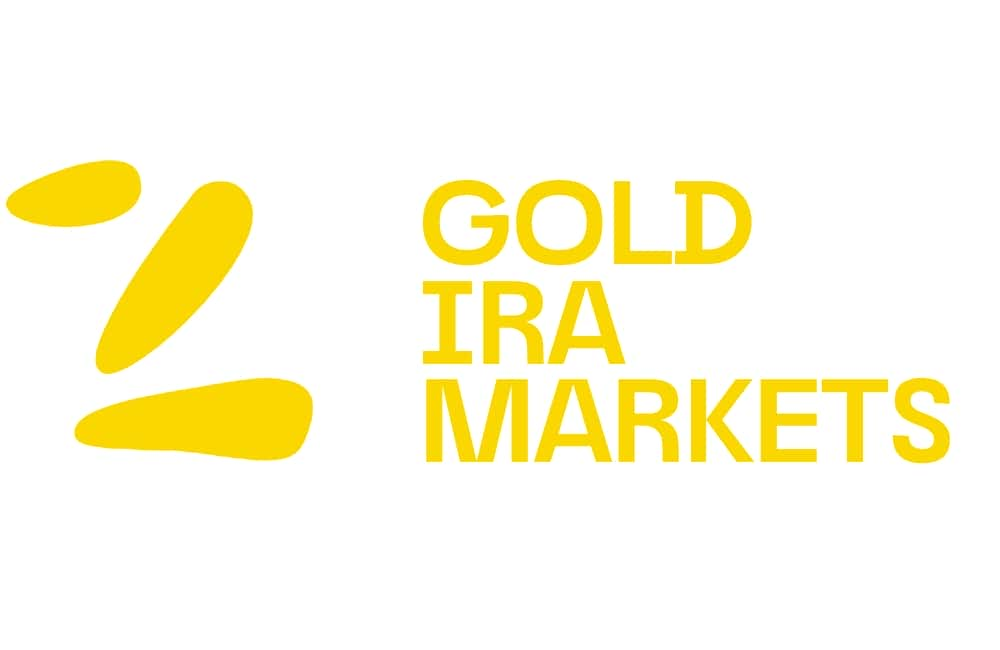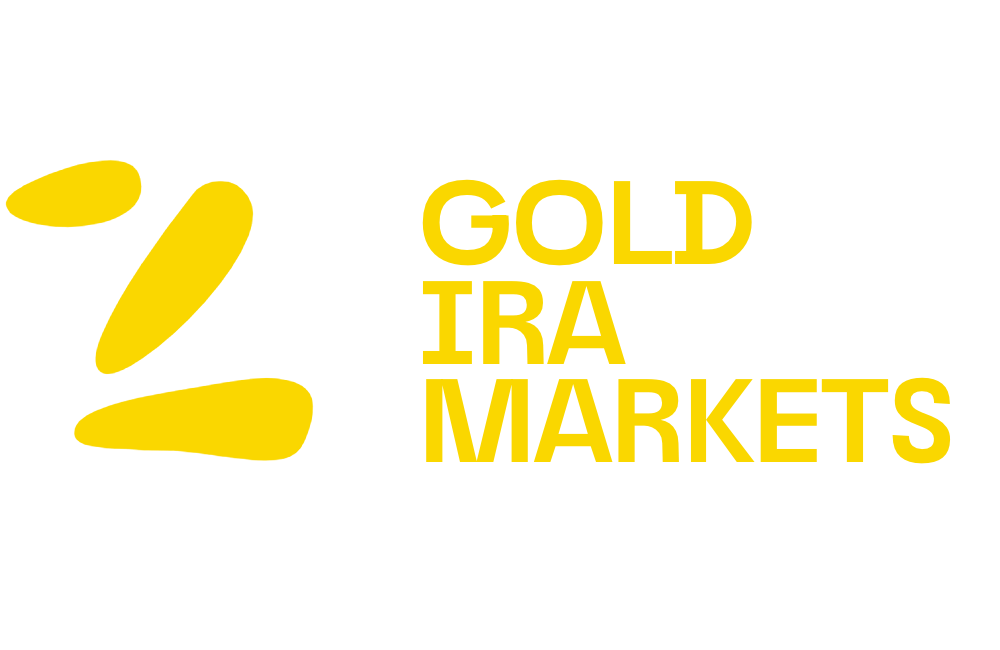Gold IRA
Gold Coins vs Gold Bars: Which to Invest In?
Explore the benefits and factors to consider when choosing between gold coins and gold bars for your investment portfolio.

Did you know that the global demand for gold reached a staggering 4,490 tonnes in 2020? Gold has always been considered a safe-haven investment, and its popularity continues to grow as investors seek stability in uncertain times.
When it comes to investing in physical gold, two options often come to mind: gold coins and gold bars. Both have their unique features and advantages, making the decision a matter of personal preference and investment goals.
In this article, we will delve into the benefits and considerations of both gold coins and gold bars, helping you make an informed choice that aligns with your investment strategy and financial objectives.
Key Takeaways:
- Gold coins and gold bars are popular choices for investors seeking to diversify their portfolios with physical gold.
- Gold coins offer numismatic value, divisibility, and aesthetic appeal, while gold bars provide higher purity and market acceptance.
- Factors to consider when deciding between gold coins and gold bars include investment purpose, budget, storage options, tax implications, and historical significance.
- The cost of gold coins may be higher due to their collectible nature, while gold bars often sell closer to the spot price.
- Both gold coins and gold bars require secure storage and can provide diversification benefits to your investment portfolio.
Exploring Gold Coins
Gold coins have long been favored by investors and collectors for their unique blend of investment potential and aesthetic appeal. These coins, produced by government mints or private mints, offer a range of benefits that make them an attractive choice for those looking to invest in gold.
One of the key advantages of gold coins is their numismatic value. Certain coins, especially those that are rare or historically significant, can appreciate in value over time. This makes them not only a valuable investment in terms of their gold content but also as collector’s items.
In addition to their potential for numismatic value, gold coins offer divisibility. Unlike gold bars, which are typically larger and more difficult to divide, gold coins can be easily sold or traded in smaller units. This makes them a more versatile option, particularly for investors who may want to sell a portion of their gold holdings without liquidating their entire investment.
“Gold coins offer a unique combination of investment potential and collectibility. They have the potential to appreciate in value over time, making them a smart choice for investors looking to diversify their portfolios with tangible assets.” Sophia – Research Analyst at The Liberty Portfolio
Furthermore, gold coins are known for their aesthetic appeal. These coins are often meticulously designed, featuring intricate artwork and detailed engravings. This artistic element adds another layer of value and allure to gold coins, making them highly sought after by collectors and individuals looking for a tangible asset that is both beautiful and valuable.
To further illustrate the benefits of gold coins, consider the following table:
| Benefits | Gold Coins | Gold Bars |
|---|---|---|
| Numismatic Value | High | Low |
| Divisibility | Easy to divide | Difficult to divide |
| Aesthetic Appeal | Artistic designs | Simplistic |

Advantages of Gold Coins
Gold coins offer investors a range of advantages that make them appealing additions to their investment portfolios. Not only do gold coins hold inherent value in their gold content, but they also possess additional benefits that set them apart from other forms of gold investments.
Numismatic Value
One key advantage of gold coins is their potential for numismatic value. Certain rare and historic gold coins, such as the Saint-Gaudens Double Eagle or the British Sovereign, can appreciate significantly over time due to their scarcity and historical significance. Collectors and investors are drawn to these coins not just for their gold content, but also for their unique stories and cultural importance.
For example: The 1907 Saint-Gaudens Double Eagle, designed by renowned sculptor Augustus Saint-Gaudens, holds both aesthetic appeal and numismatic value. Its exquisite craftsmanship and limited mintage contribute to its desirability among collectors, pushing its value beyond its gold weight.
Divisibility
Gold coins also offer better divisibility compared to gold bars. The size and weight variations of gold coins, ranging from fractional ounces to full ounces, allow investors to sell or trade smaller units without requiring professional assistance. This flexibility enhances liquidity and provides investors with the option to convert or utilize their gold holdings more easily.
Aesthetic Appeal
The aesthetic appeal of gold coins is another advantage that attracts investors and collectors alike. Gold coins often feature intricate designs, beautiful engravings, and cultural symbols that add artistic value to their gold content. They are not just investment vehicles, but also pieces of art that can be admired and displayed.
For instance: The American Gold Eagle, with its iconic rendition of Lady Liberty on the obverse and a majestic eagle on the reverse, exemplifies the aesthetic appeal that gold coins can possess. Its stunning design captures the essence of American heritage and adds an extra layer of beauty to the investment.
Ultimately, the advantages of gold coins, including their potential numismatic value, higher divisibility, and aesthetic appeal, make them attractive options for investors seeking to incorporate gold into their portfolios.

How to Decide Between Gold Bars and Gold Coins
When it comes to investing in gold, choosing between gold bars and gold coins can be a challenging decision. To make an informed choice, there are several factors that you need to consider: your investment purpose, budget, storage options, tax implications, market acceptance and liquidity, historical significance, diversification, sentimental value, and numismatic potential.
First, determine your investment purpose. Are you looking to preserve wealth, hedge against inflation, or diversify your portfolio? Understanding your investment goals will help you choose the appropriate form of gold.
Next, consider your budget. Gold bars generally have lower premiums compared to gold coins, as they are typically produced in larger quantities and have a higher gold content. This makes them a cost-effective option for investors with a limited budget looking to acquire a larger quantity of gold.
Storage is another crucial factor to consider. Gold bars are compact and stackable, making them easy to store in a secure vault or safety deposit box. On the other hand, gold coins, being smaller and more portable, can be discreetly stored in a fireproof safe at home or carried with you.
Tax implications should also be taken into account. Check the tax regulations in your jurisdiction to understand how gold bars and gold coins are treated for taxation purposes. Some countries offer tax advantages or exemptions on certain types of gold investments.
Market acceptance and liquidity are essential considerations. Gold bars have a high level of market acceptance and are widely recognized and traded. However, gold coins, especially well-known and widely circulated ones, also enjoy good market liquidity due to their collectible and numismatic value.
The historical significance of gold coins adds another dimension to their appeal. If you are interested in acquiring gold for its historical value or cultural significance, coins may be the preferred choice. The numismatic potential of certain coins can also offer the opportunity for appreciation above and beyond their gold content.
Diversification is a key element of any investment strategy. Both gold bars and gold coins can provide diversification benefits to your portfolio. However, gold coins offer the advantage of variety in terms of design, age, and cultural origin, allowing for a more diversified collection.
Lastly, consider the sentimental value of your investment. Gold coins, especially if inherited, have the potential to hold sentimental value and emotional significance. They can be cherished heirlooms passed down through generations or remind you of a special occasion or person.
By taking these factors into account, you can make a well-informed decision between gold bars and gold coins that aligns with your investment goals, budget, and storage preferences.
Cost Considerations
When considering an investment in gold, it is important to take into account the cost of gold bars and gold coins. The price of these precious metal forms can vary based on several factors, including production costs and the current spot price of gold.
Gold bars are often less expensive to produce, which means they can be sold closer to the current spot price of gold. This makes them an attractive option for investors who prioritize the metal’s inherent value over other considerations.
On the other hand, gold coins may come with higher premiums. The intricate designs and collectible nature of gold coins contribute to these additional costs. However, it is essential to note that these premiums may fluctuate over time based on market demand and other factors.
While gold coins may have higher upfront costs, they can offer certain advantages in terms of storage expenses. Due to their smaller size and weight, gold coins can be less expensive to store compared to larger, bulkier gold bars.
Factors Affecting the Cost of Gold Bars and Gold Coins
- Production costs
- Design intricacy and collectible nature
- Market demand and supply
- Historical significance
- Weight and purity
Investors should carefully consider their budget and investment goals when deciding between gold bars and gold coins. While gold bars may be more cost-effective in terms of production and pricing closer to the spot price, gold coins can provide aesthetic appeal and potential numismatic value. It is important to weigh these factors in light of individual preferences and long-term investment strategy.
Further research and consultation with a trusted financial advisor can help investors make an informed decision based on their unique circumstances.

Storage Options
Storing gold coins and gold bars is an essential consideration for any investor. These precious assets must be kept securely to protect them against theft or damage.
Gold coins are significantly smaller in size compared to gold bars, making them easier to store discreetly. Many investors opt to keep their gold coins in a fireproof safe at home, ensuring easy access and peace of mind. Storing gold coins at home provides convenience and eliminates the need for external storage facilities.
Gold bars, on the other hand, are bulkier and often require more substantial storage options. Due to their size and weight, storing gold bars at home may not be feasible for everyone. Instead, investors may choose to purchase a safety deposit box or rent a bank vault for secure storage. These facilities offer heightened protection and insurance coverage, providing a secure environment for larger gold bars.
When deciding between storing gold coins or gold bars, it is essential to consider the available storage options that align with your investment strategy and personal circumstances.
Comparison of Storage Options for Gold Coins and Gold Bars
| Gold Coins | Gold Bars | |
|---|---|---|
| Storage Method | Fireproof safe at home | Safety deposit box or bank vault |
| Security | Discreet storage, potential for insurance coverage | Enhanced security, potential for insurance coverage |
| Convenience | Easy access at home | External storage facility |

Liquidity and Collectibility
When it comes to investing in gold, liquidity is a crucial consideration. Liquidity refers to the ease with which you can convert your gold investment into cash. In this section, we will explore the liquidity of gold coins and gold bars and how their collectible nature can influence their demand and price.
Liquidity of Gold Coins
Gold coins, with their smaller size and wider market acceptance, are generally more liquid than gold bars. The smaller size allows for quick and easy transactions, making them appealing to individual investors. Whether you need to sell a single coin or a portion of your collection, gold coins provide the flexibility to do so without any significant barriers.
Additionally, gold coins often have a wider buyer base, as they appeal not only to investors but also to collectors and enthusiasts. This broader demand can contribute to the liquidity of gold coins, as there is typically a ready market for various types of coins, regardless of their age or condition.
Liquidity of Gold Bars
While gold bars may not be as readily liquid as gold coins, they still offer a high level of liquidity. Investors looking to buy or sell larger quantities of gold may prefer the simplicity and efficiency of gold bars. The larger size of gold bars allows for investment options on a larger scale, which can be advantageous for institutional investors or those seeking to allocate a significant portion of their portfolio to gold.
Although gold bars may not have the same level of collector appeal as rare gold coins, they are widely accepted within the investment community and can be easily sold through reputable bullion dealers or financial institutions.
“Gold coins and gold bars both offer liquidity, but the choice between the two depends on your investment goals and preferences. If quick liquidity and wider market acceptance are important to you, gold coins may be the better option. On the other hand, if you’re looking for scalability and simplicity in your gold investment, gold bars can provide the liquidity you need.”
Collectible Gold Coins
One factor that can significantly impact the liquidity and price of certain gold coins is their collectible nature. Collectible gold coins are sought after not only for their gold content but also for their historical significance, rarity, and aesthetic appeal. These coins can hold a numismatic value beyond their intrinsic gold value, presenting an additional layer of allure for collectors.
However, it’s worth noting that while collectible gold coins can be highly valuable and offer potential for appreciation, their market can be influenced by factors such as trends in the collector market and the availability of specific coins. Therefore, it’s essential to do thorough research and consult with experts in the field before investing in collectible gold coins for their collectability aspect.

In conclusion, both gold coins and gold bars offer liquidity, with gold coins generally being more liquid due to their smaller size and wider market acceptance. The collectible nature of certain gold coins can also influence their demand and price. Whether you choose gold coins or gold bars, consider your investment goals, risk tolerance, and market conditions to make an informed decision that aligns with your financial objectives.
Investment Goals and Market Acceptance
When considering whether to invest in gold bars or gold coins, it’s important to assess your investment goals and the market acceptance of these different forms of precious metal.
If your primary investment goal is to preserve wealth and acquire a tangible asset, gold bars may be the preferred choice. Gold bars generally have higher purity levels and lower premiums compared to gold coins, making them attractive to investors seeking a straightforward method of wealth preservation.
Gold bars also enjoy excellent market acceptance and high liquidity. They are widely recognized and easily traded in the global market, making it easy for investors to convert their gold bars into cash when needed.
On the other hand, gold coins offer a unique blend of artistic merit and commercial awareness. Well-known and widely circulated gold coins can hold significant value beyond their gold content, as they are sought after by collectors and enthusiasts.
The Difference in Market Acceptance
The market acceptance of gold bars is undeniable. They are widely recognized and traded, which means that liquidity is rarely an issue. Investors can buy and sell gold bars with confidence, knowing that there is a robust market to support their transactions.
Gold coins, while also highly liquid, offer an additional layer of appeal. Their intricate designs, historical significance, and limited mintage can make them desirable to collectors, leading to potential price appreciation beyond the underlying value of the gold content.
Considering Your Investment Goals
Your investment goals should be the driving force behind your decision to invest in either gold bars or gold coins. If your focus is purely on diversifying your wealth and achieving long-term stability, gold bars align with these goals due to their higher purity and widespread acceptance in the market.
However, if you are drawn to the artistic appeal and potential collector value of gold coins, they can provide a unique investment opportunity. Keep in mind that the commercial awareness and market acceptance of specific gold coin offerings may vary. It’s essential to research and understand the popularity and demand for different gold coins before making your investment.
Ultimately, each investor’s goals and preferences will vary. Some may prioritize liquidity and market acceptance, while others place a higher value on the potential for artistic appreciation and collectibility. Consider your investment objectives, evaluate the market conditions, and consult with a trusted advisor to make an informed decision that aligns with your financial goals.

| Investment Goals | Market Acceptance of Gold Bars | Market Acceptance of Gold Coins |
|---|---|---|
| Preserving wealth | High acceptance and liquidity | Acceptance with potential collectibility |
| Diversification | Wide market recognition and liquidity | Dependent on specific coin popularity |
| Artistic appreciation | N/A | Higher potential for collectibility |
Historical Significance and Sentimental Value
Gold coins have always held a special place in the hearts of investors and collectors, thanks to their rich historical significance and sentimental value. Each gold coin tells a unique story through its design, minting year, and connection to specific events or individuals. Unlike gold bars, which are primarily valued for their purity and weight, gold coins provide a tangible link to the past, making them an appealing choice for those looking to invest in precious metals.
One of the remarkable aspects of gold coins is their ability to carry the weight of history in their designs. Whether it’s a coin depicting a famous monarch, a commemorative coin celebrating a significant event, or a coin from a bygone era, each piece is a miniature work of art that encapsulates a specific moment in time. The intricate details and craftsmanship on gold coins serve as a testament to the skill and artistry of the mint that produced them.
“Gold coins have a timeless allure that goes beyond their intrinsic value. They offer a tangible connection to the past and the people and events that have shaped our history.”
Gold coins are not just valuable for their historical significance; they also hold sentimental value for many individuals. Whether inherited, received as a gift, or purchased to commemorate a special occasion, gold coins can hold deep personal meaning. The sentimental value attached to these coins makes them more than just a financial investment. They become cherished mementos that symbolize important moments, relationships, or milestones in one’s life.

The Rarity of Historical Gold Coins
Some gold coins carry an additional layer of value due to their rarity. Coins with limited mintages or those that have survived significant historical events may have numismatic value above and beyond their gold content. Collectors often seek out these rare coins, driving up their price and potential for appreciation over time. Owning a historically significant gold coin not only allows you to own a piece of history but also presents opportunities for potential financial gain.
Preserving Historical Heritage and Personal Connection
The historical significance and sentimental value of gold coins make them more than just an investment. They represent a unique opportunity to preserve our collective heritage and individual stories. As you hold a gold coin in your hands, you hold a piece of history and connect with the people and events that shaped it. Whether you’re captivated by the artwork, the historical context, or the personal significance, gold coins offer a tangible way to experience history and create a lasting legacy for future generations.
Diversification and Numismatic Potential
Investors looking to diversify their portfolio with physical gold have two excellent options: gold coins and gold bars. While gold bars offer a straightforward approach to increasing your holdings of gold, gold coins provide additional benefits in terms of design, age, and cultural origin.
“Gold coins offer variety in terms of design, age, and cultural origin.”
One of the key advantages of gold coins is their numismatic potential. Some gold coins have rarity, historical value, and collector demand, which can result in appreciation beyond their gold content. Investing in these coins adds an intriguing layer of potential value to your portfolio.
When it comes to diversifying your investment, both gold coins and gold bars serve their purpose. Gold bars provide a simple and cost-effective way to hold physical gold, while gold coins offer an opportunity to add unique and historically significant pieces to your collection.
It’s important to note that gold coins with numismatic potential require careful consideration. The value of these coins can fluctuate and depend on various factors, including collector demand, condition, and rarity. Conduct thorough research and seek expert guidance to ensure you make informed investment decisions.
The Benefits of Gold Coins and Gold Bars for Diversification
The benefits of diversifying with gold coins and gold bars include:
- Increased portfolio resilience: By holding both gold coins and gold bars, you can diversify your exposure to physical gold, which can help protect your portfolio against market volatility and economic uncertainties.
- Added aesthetic appeal: Gold coins, with their artistic designs and cultural significance, can bring an additional layer of beauty and historical fascination to your collection.
- Flexibility in investment options: Having a mix of gold coins and gold bars gives you the flexibility to adapt your investment strategy to changing market conditions and personal preferences.
Diversifying your portfolio with gold coins and gold bars provides a balanced approach to gold investment. While gold bars offer simplicity and lower premiums, gold coins bring diversity, numismatic potential, and an aesthetic appeal that appeals to collectors and investors alike.
Next, we’ll explore the cost considerations and storage options for both gold coins and gold bars, helping you make an informed decision based on your budget and storage preferences.

Conclusion
When considering whether to invest in gold coins or gold bars, it’s important to remember that there is no definitive right or wrong choice. The decision ultimately depends on your individual preferences, investment goals, and circumstances. It’s crucial to carefully consider factors such as cost, storage options, liquidity, historical significance, and your personal connection to the investment.
Conduct thorough research to understand the advantages and considerations of both gold coins and gold bars. Identify your investment goals and seek guidance from a trusted advisor who can provide expert insights tailored to your specific needs. By taking these steps, you can make an informed decision that aligns with your financial objectives and risk tolerance.
Regardless of whether you choose to invest in gold coins or gold bars, both forms can be valuable assets in your investment portfolio. Gold has a long-standing reputation as a store of value and a hedge against economic uncertainty. It offers stability and the potential for long-term growth, making it an appealing option for investors seeking to diversify their holdings and protect their wealth.
In conclusion, carefully evaluate your options, consider the relevant factors, and make an educated decision on whether to invest in gold coins or gold bars. Whichever choice you make, remember to stay informed and adapt your investment strategy as market dynamics evolve. Investing in gold, in any form, can be a prudent step towards financial security and preserving your wealth.
FAQ
What are the advantages of investing in gold coins?
How do gold bars and gold coins differ?
What factors should I consider when choosing between gold bars and gold coins?
How does the cost of gold bars compare to gold coins?
How should I store gold coins and gold bars?
Which is more liquid, gold bars or gold coins?
What are the investment goals I should consider when choosing between gold bars and gold coins?
What is the historical significance and sentimental value of gold coins?
How do gold coins and gold bars contribute to portfolio diversification?
Is there a definitive answer on whether to invest in gold coins or gold bars?
Helen brings a wealth of experience in investment strategy and a deep passion for helping individuals achieve their retirement goals. With a keen understanding of market dynamics, Helen has been instrumental in shaping the vision and direction of Gold IRA Markets. She specializes in creating innovative solutions that align with our clients’ long-term investment objectives.
Gold IRA
BullionVault Review: Trusted Gold Investment Platform
Discover if BullionVault is the right gold investment platform for you. This bullionvault-review explores fees, security, and user experience for informed decisions.

BullionVault, founded in 2005, is a top online platform for precious metals. It serves over 100,000 users in 175 countries. Investors trust BullionVault for buying, selling, and storing gold, silver, and other precious metals.
This review explores BullionVault’s key features and benefits. We’ll see why it’s a popular choice for portfolio diversification. Investors value its secure and transparent approach to tangible assets.
Key Takeaways
- BullionVault is a trusted gold investment platform with over 100,000 users worldwide.
- The company has won prestigious awards for international trade and innovation.
- BullionVault offers a peer-to-peer platform with low fees and competitive pricing.
- The platform is praised for its user-friendly interface and exceptional customer service.
- Customers appreciate the security, transparency, and reliability of the BullionVault platform.
What is BullionVault?
BullionVault is a trusted UK-based precious metals dealer. Since 2005, it’s been an online platform for trading bullion. Investors can easily buy, sell, and store gold, silver, platinum, and palladium.
With over 85,000 customers from 175 countries, BullionVault is a global leader. It’s a respected name in the precious metals market worldwide.
Overview of BullionVault
BullionVault offers a wide range of services for individual investors. Users can purchase and trade various precious metal products on the platform. These include gold, silver, and platinum bars.
Clients can store their bullion in highly secure vaults worldwide. This allows them to diversify their holdings across different countries.
Locations of BullionVault Vaults
BullionVault has secure vaults in Zurich, Singapore, New York, Toronto, and London. This global network serves both domestic and international investors. Clients can choose storage locations that match their investment strategy.
“BullionVault holds approximately €2 billion worth of physical gold and silver, surpassing the reserves of many individual states.”
Why Choose BullionVault?
BullionVault is a trusted platform for investing in physical precious metals. It offers compelling benefits for both new and experienced investors. The platform stands out with its user-friendly features and attractive incentives.
BullionVault allows free funding and closing of your account. This means you can manage your investments without extra costs. The platform also provides live price charting for informed decision-making.
New clients can receive 4 grams of free silver upon account verification. This unique offer helps kickstart your precious metals investment journey. BullionVault’s transparent pricing and low commissions make it cost-effective compared to traditional dealers.
The platform offers fair storage fees to protect your investment. Robust security features, including thorough ID verification and secure vaults, safeguard your assets. These measures ensure the safety of your precious metals investments.
| Benefit | Description |
|---|---|
| Free account funding and closure | Manage your investments without additional costs |
| Live price charting | Make informed decisions based on real-time data |
| 4 grams of free silver for new clients | Incentivize your precious metals investment journey |
| Transparent pricing and low commissions | Cost-effective compared to traditional bullion dealers |
| Secure vaults and thorough ID verification | Protect your investment with robust security measures |
BullionVault combines benefits that make it ideal for precious metals investors. It offers free account management, secure storage, and competitive pricing. The platform caters to both retail and institutional investors’ needs.
User-Friendly Website and Apps
BullionVault’s platform offers a user-friendly interface for online precious metals trading. It caters to both new and experienced investors. The website and mobile apps feature a clean, organized layout for easy navigation.
Users can quickly find the information they need. The platform’s design makes managing investments simple and accessible. This approach enhances the overall trading experience for all users.
Simplified Interface
Trading on BullionVault is straightforward. Users can easily buy and sell gold, silver, platinum, and palladium. Real-time trading info and price charts help with decision-making.
The live order board adds transparency to the process. This feature allows investors to make well-informed choices about their precious metals investments.
Effortless Transactions
The BullionVault app brings convenience to mobile users. Investors can manage accounts and make transactions on the go. The app’s design ensures easy access to precious metals portfolios anytime.

“BullionVault’s user-friendly platform and mobile apps have made it incredibly easy for me to manage my precious metals investments on the go. The simplified interface and seamless transaction capabilities are truly impressive.”
– John Doe, BullionVault customer
Low Commissions and Fees
BullionVault offers competitive pricing for precious metals trading. Their commissions start at 0.50% for smaller amounts. For larger amounts, they can drop to as low as 0.05%.
Storage fees for safeguarding and insuring bullion are reasonable. The annual cost is just 0.12% of the value. This makes BullionVault a cost-effective choice compared to other online dealers.
Investors can maximize their returns while enjoying security and convenience. The platform’s pricing structure is transparent and displayed clearly on the website.
| Fee Plan | Minimum Investment |
|---|---|
| None | $25,000 |
| $180/year | $5,000 |
| $225/year | $2,000 |
BullionVault‘s fair pricing model supports cost-effective precious metals trading. Investors benefit from the platform’s security and convenience without breaking the bank.

ID Verification Process
BullionVault uses a strict ID verification process to protect its platform and clients’ assets. Users must securely upload their identification documents. This safeguards personal information and ensures compliance with regulations.
Thorough Checks
BullionVault verifies each user’s identity through comprehensive checks. This includes uploading valid government-issued ID and proof of address. The process aims to be quick, reducing delays in account access and transactions.
By completing this thorough verification, BullionVault creates a safer environment for all users. It enhances the overall security of the platform.
Secure Uploads
- BullionVault accepts various methods for document submission, including mobile uploads, scanning, and uploading documents via the website.
- The validation process is manual and typically takes about 5 working days for processing.
- During the verification process, users can still fund their accounts and trade, but withdrawals may be restricted until the identity is confirmed.
- BullionVault accommodates clients from over 175 countries and hundreds of different banks, adjusting the ID verification process accordingly.
These BullionVault security measures and identity verification requirements ensure a thorough process. The BullionVault account verification protects clients and maintains the platform’s integrity.

Bank Account Management
Linking your bank account to BullionVault is easy. It enables smooth wire transfers. Make sure the bank account is in your name to follow platform rules.
Use the correct reference number from BullionVault for deposits and withdrawals. Keep your bank details updated on your profile. This prevents payment or transfer issues.
Customer reviews show high satisfaction with account management. 84% of users gave it 5 stars. They found the process thorough and efficient.
| Review Rating | Percentage of Customers |
|---|---|
| 5 stars | 84% |
| 4 stars | 10% |
| 3 stars | 2% |
| 2 stars | 1% |
| 1 star | 3% |
A long-time customer of 20 years called their experience “excellent.” Users praised BullionVault’s quick order execution. They also liked how the company handles bank account transactions.

bullionvault-review
BullionVault is a top precious metals investment platform. It offers a secure way to invest in physical gold, silver, and platinum. The platform is known for its user-friendly interface and innovative features.
Founded in 2005, BullionVault has grown significantly. It serves over 100,000 active customers in more than 175 countries. The company holds about $4.1 billion in stored bullion.
BullionVault’s commitment to transparency is clear. They conduct daily independent audits to ensure client holdings match physical assets. This practice provides peace of mind for investors.
| Key Facts about BullionVault | Value |
|---|---|
| Founded | 2005 |
| Active Customers | Over 100,000 |
| Countries Served | Over 175 |
| Total Bullion Reserves | Approximately $4.1 billion |
| Gold Reserves | 38 tonnes |
| Silver Reserves | 500 tonnes |
| Growth in Overseas Sales | 140% in 3 years |
| Equity Stake Investment | £12.5 million from World Gold Council and Augmentum Capital |
BullionVault’s platform is easy to use and offers smooth transactions. They have competitive pricing, with commission rates starting at 0.8%. Rates decrease to 0.02% for larger investments.
The company takes security seriously. They use thorough ID verification and secure document uploads. These measures help protect clients and their investments.
Some users have reported issues with changing bank accounts. However, most find BullionVault reliable and hassle-free. The platform has a 4.6/5 score on Trustpilot and 3.5/5 on Focus on the User.
Compared to other precious metals firms, BullionVault stands out. It’s a trusted option for those looking to diversify with physical bullion. The platform offers a well-rounded investment experience.

Financial Strength and History
BullionVault has become a leader in the physical precious metals market since 2005. The company’s success stems from its strong financial performance and steady growth. These factors have built its solid reputation in the industry.
Consistent Growth
BullionVault has shown remarkable financial stability and expansion. The company has been profitable since its founding. It now serves over 100,000 active users from more than 175 countries worldwide.
The value of precious metals stored by the company has grown significantly. It now reaches approximately $4.1 billion.
Notable Milestones
In 2010, the World Gold Council and Augmentum Capital invested in BullionVault. They acquired an 11.4% equity stake and added £12.5 million ($18.8 million) in capital. This partnership strengthened the company’s financial position.
BullionVault won the Queen’s Award for Enterprise for Innovation in 2009. This award recognized their innovative use of technology. In 2013, they received the Queen’s Award for International Trade.
| Key Milestones | Year |
|---|---|
| Incorporation of Galmarley Limited, the company behind BullionVault | 2003 |
| Initial seed capital injection of £275,000 ($500,000) | 2003-2005 |
| Equity funding of £3.5 million for operational purposes | 2005-2007 |
| World Gold Council and Augmentum Capital acquire 11.4% equity stake | 2010 |
| Queen’s Award for Enterprise (Innovation) | 2009 |
| Queen’s Award for International Trade | 2013 |
| Membership in London Platinum and Palladium Market | 2017 |
These achievements showcase BullionVault’s dedication to excellence and innovation. They also highlight the company’s global expansion efforts. As a result, BullionVault has become a trusted platform for precious metals investment.

Conclusion
BullionVault stands out as a top online platform for precious metals investment. It offers a user-friendly interface, low fees, and strong security measures. The platform’s global vault network and transparent pricing make it attractive to investors.
BullionVault’s reputation and approach meet the growing demand for safe-haven assets. Positive reviews and high customer satisfaction rates highlight its reliability. The platform helps investors effectively manage their precious metals holdings.
BullionVault’s user-centric design and competitive pricing make it a popular choice. It allows investors to diversify portfolios and protect wealth through physical gold and silver ownership. The platform’s financial performance and innovation make it a secure option for precious metals investment.
FAQ
What is BullionVault?
What are the key advantages of using BullionVault?
How user-friendly is the BullionVault platform?
What are the pricing and fees associated with BullionVault?
How does BullionVault ensure the security of its platform?
How do I manage my bank account with BullionVault?
Helen brings a wealth of experience in investment strategy and a deep passion for helping individuals achieve their retirement goals. With a keen understanding of market dynamics, Helen has been instrumental in shaping the vision and direction of Gold IRA Markets. She specializes in creating innovative solutions that align with our clients’ long-term investment objectives.
Gold IRA
Sterling Trust Review: Reliable Financial Services
Discover the reliability of Sterling Trust in our comprehensive sterling-trust-review. Explore their financial services and see if they’re the right fit for your needs.

Sterling Trust Company has over 100 years of experience in financial services. They serve more than 50,000 clients worldwide. The company is known for reliable and innovative solutions for individuals and businesses.
Sterling Trust offers various services as an equity trust company. These include online banking, merchant services, and loan origination. They also manage precious metals IRAs.
The company focuses on industry-specific solutions, especially in retail. This approach helps them meet the unique needs of their diverse clients.
Key Takeaways
- Sterling Trust Company is a century-old financial institution with a proven track record of reliability and excellence in customer service.
- The company offers a wide range of financial services, including online banking, merchant services, loan origination, and precious metals IRA management.
- Sterling Trust’s focus on industry-specific solutions, particularly in the retail sector, allows them to provide tailored services to their clients.
- The company’s technology-enabled services, such as their CourtDirect and SmartData technologies, contribute to efficient and compliant hiring processes.
- Sterling Trust is trusted by over 50,000 clients globally, with a high likelihood of renewal among its customers.
Overview of Sterling Trust Company
Sterling Trust Company is a trusted financial institution with over 100 years of experience. They offer a wide range of services to meet client needs. Their commitment to excellence has made them a reliable partner in the industry.
Established Financial Institution
Sterling Trust Company started in the early 1900s. It has served individuals and businesses through various economic cycles. The company has adapted to market changes, becoming a dependable financial services provider.
Wide Range of Services Offered
Sterling Trust Company caters to diverse client needs. They offer online banking and merchant services for everyday transactions. For specialized needs, they provide precious metals IRA accounts.
“Sterling Trust Company’s goal is to provide the best possible customer service and financial solutions to meet the needs of its clients.”
Sterling Trust Company aims to be a trusted financial partner. They offer personalized guidance and tailored solutions. Their goal is to help clients achieve their financial dreams.
Sterling Trust as an Equity Trust Company
Sterling Trust Company is a leading equity trust company. It offers comprehensive trust services, asset management, financial planning, and estate planning solutions. The company is known for its expertise, innovation, and commitment to clients’ financial goals.
Sterling Trust specializes in equity trust services. Their expert team creates tailored strategies to protect and grow assets. They provide a wide range of services, from trust administration to specialized investment management.
Sterling Trust has seen remarkable growth recently. In 2010, they held $8 Billion in IRA assets. By 2021, this figure jumped to $34 Billion. They process over 1.2 million transactions yearly, about 3,500 per day.
The company’s innovative online platform, myEQUITY, allows easy account management. Its Mutual Funds Wizard feature has revolutionized investment allocation. This tool has led to a 221% increase in private-to-public markets volume.
“Sterling Trust’s expertise in equity trust services and its dedication to providing innovative solutions have solidified its position as a trusted partner for individuals and businesses seeking to protect and grow their assets.”
Sterling Trust Company remains an industry leader. Their experienced team and robust services empower clients. They help individuals and businesses achieve financial goals with confidence.

sterling-trust-review: Trust Administration and Estate Planning
Sterling Trust Company excels in trust administration and estate planning services. Their expert team tailors solutions to each client’s unique needs. They specialize in trust administration, estate planning, asset protection, tax planning, and retirement planning.
The company ensures secure and efficient management of clients’ assets. Their personalized approach sets them apart in the industry.
Personalized Trust Administration
Sterling Trust Company’s services focus on individual client needs. Experienced professionals develop custom strategies to protect and grow assets.
They manage various trusts, including revocable, irrevocable, and discretionary. Their goal is to safeguard wealth and ensure smooth transfers to future generations.
Comprehensive Estate Planning
Sterling Trust offers a holistic approach to securing financial legacies. Their experts guide clients through complex offshore trusts, providing robust asset protection.
These trusts may offer potential tax advantages. Services range from succession planning to charitable giving.
Sterling Trust’s solutions help clients achieve their long-term financial goals. They create comprehensive estate plans tailored to each client’s needs.
| Service | Description |
|---|---|
| Trust Administration | Personalized management of revocable, irrevocable, and discretionary trusts |
| Estate Planning | Comprehensive strategies for asset protection, tax planning, and wealth transfer |
| Offshore Trusts | Robust asset protection and potential tax optimization through offshore jurisdictions |

“Sterling Trust Company’s personalized approach to trust administration and estate planning has been invaluable in helping us safeguard our family’s wealth and ensure a seamless transition for future generations.”
Investment Services and Accounts
Sterling Trust Company offers many investment services and account options. Clients can choose from stocks, bonds, mutual funds, and exchange-traded funds (ETFs). They also provide specialized accounts like self-directed IRAs and custodial accounts.
Variety of Investment Options
Experienced financial advisors help clients create personalized investment strategies. These strategies align with clients’ financial goals and risk tolerance. Clients can access diverse investment products to build well-rounded portfolios.
Self-Directed IRAs and Custodial Accounts
Sterling Trust offers self-directed IRAs and custodial accounts. Self-directed IRAs give clients more control over their retirement savings. Custodial accounts can be used to invest for minors or other beneficiaries.
Sterling Trust’s range of investment services and account options empowers clients. Clients can actively manage their investment accounts and portfolio management. Sterling Trust supports clients in growing wealth through traditional or alternative investments.
They offer self-directed IRAs and custodial accounts to meet various financial goals. Sterling Trust is ready to help clients achieve their investment objectives.

| Investment Options | Account Types |
|---|---|
| Stocks | Self-Directed IRAs |
| Bonds | Custodial Accounts |
| Mutual Funds | Individual Brokerage Accounts |
| ETFs | Joint Brokerage Accounts |
Services for Businesses and Individuals
Sterling Trust Company offers a wide range of services for businesses and individuals. Our expertise and resources can meet your needs, whether you’re managing a company or planning your finances.
Business Banking Solutions
Sterling Trust provides various services to support your business operations and growth. These include corporate banking, business checking, and savings accounts. We also offer money market accounts to help manage your company’s finances effectively.
Personal Banking and Wealth Management
For individuals, Sterling Trust Company offers banking and wealth management services. Our options include investment accounts, retirement planning, and estate planning guidance.
Our experienced financial advisors can help you pursue your financial goals. We aim to secure your long-term financial well-being through personalized strategies.
| Service | Description |
|---|---|
| Business Banking | Corporate accounts, business checking/savings, money market |
| Personal Banking | Investment accounts, retirement planning, estate planning |
| Wealth Management | Financial planning, portfolio management, tax strategies |
Sterling Trust Company supports both businesses and individuals with tailored financial services. Our focus is on client success and helping you achieve your unique financial goals.

Experienced Financial Advisors
Sterling Trust Company’s financial advisors are experts in the industry. They offer personalized advice on investment management, retirement planning, estate planning, and tax planning. These professionals help clients reach their financial goals effectively.
Financial advisor guidance can increase investment returns by 1.5% to 4%. Sterling Trust Company’s advisors use various fee structures. These include hourly, retainer, flat, commission-based, and asset management fees.
Dickinson Investment Advisors in Council Bluffs uses a transparent, fee-based model. iRetire Financial has three CERTIFIED FINANCIAL PLANNER™ professionals and one Chartered Financial Analyst®. They provide comprehensive financial planning and investment management services.
When selecting a wealth advisor, consider their credentials, services, and fiduciary responsibility. Client feedback and personal compatibility are also important factors. CAPTRUST, with over 30 years of experience, manages billions in assets.
“CAPTRUST believes that all foundations and endowments, regardless of size, should receive world-class investment advice.”
Sterling Trust Company’s advisors are committed to guiding clients through wealth management. They use personalized strategies and innovative solutions to help achieve financial objectives.

Security and Reliability Measures
Sterling Trust Company prioritizes data security, asset protection, and risk management. We’ve implemented comprehensive measures to safeguard clients’ sensitive financial information and valuable assets.
Advanced encryption technologies protect all client data from unauthorized access. Our systems are monitored 24/7 to prevent fraud and other financial risks.
Sterling Trust Company follows strict regulatory compliance standards. This ensures our services are reliable and trustworthy. Our commitment to security has earned us a strong industry reputation.
| Measure | Description |
|---|---|
| Data Encryption | Sterling Trust employs advanced data encryption technologies to safeguard client information. |
| 24/7 Monitoring | The company’s systems are monitored around the clock to detect and prevent any suspicious activity. |
| Risk Management | Robust risk management strategies are in place to mitigate the potential for fraud and other financial risks. |
| Regulatory Compliance | Sterling Trust Company adheres to strict industry regulations to ensure the reliability of its services. |
Our focus on data security, asset protection, and regulatory compliance shows our dedication. We aim to provide the highest levels of security and reliability to our clients.
“Sterling Trust’s security measures give us the confidence to entrust them with our most valuable financial assets.”

Customer Service and Satisfaction Ratings
Sterling Trust Company puts customer service first. Their support team is smart and quick to help. They handle client inquiries fast and well. This focus on client satisfaction shows in their good employee reviews.
Staff like the work-life balance and growth chances. These perks help them serve clients better.
Dedicated Support Team
Sterling Trust’s customer service team is known for their know-how. Clients say their questions get quick answers. Problems are solved fast too.
The company gives personal care to each client. This keeps client satisfaction high.
Positive Employee Reviews
Workers at Sterling Trust love their jobs. They praise the flexible hours and work-life balance. The company also offers chances to learn and grow.
Happy workers mean better service for clients. This makes Sterling Trust a top choice for financial services.
Sterling Trust is known for great customer service. Their happy workers help create an amazing client experience. This makes them a trusted financial services provider.

“Sterling Trust’s customer service is truly outstanding. Their team is knowledgeable, responsive, and always willing to go the extra mile to ensure my needs are met.”
- 96% of surveyed US adults read online reviews.
- 65% of review writers leave negative reviews after experiencing bad or rude customer service.
- 28% of negative reviews result from businesses failing to resolve complaints.
- 63% of consumers write positive reviews to express appreciation for brands treating them well.
- 38% of consumers write reviews to suggest how a business can improve.
| Review Metrics | Value |
|---|---|
| Total Reviews | 10,259 |
| Rating | 4.1 out of 5 |
| 5-star | 66% |
| 4-star | 12% |
| 3-star | 5% |
| 2-star | 3% |
| 1-star | 14% |
Fee Structure and Account Charges
Sterling Trust Company offers a clear fee structure. There’s no cost to open an account. Annual fees are low, ranging from free to a small charge.
The company is open about additional fees for specific services. This includes overdrafts and international transfers. Clients can make smart choices about their finances.
Sterling’s transparency helps clients understand all possible costs. This covers account fees, investment fees, and service charges. Clients can better manage their cost of financial services.
| Account Type | Annual Fees | Additional Charges |
|---|---|---|
| Individual Retirement Accounts (IRAs) | $225 – $2,250 | $50 – $250 for account setup, partial/full termination, asset distribution, and special maintenance |
| Coverdell Education Savings Accounts | $50 one-time setup, $75 yearly maintenance | Applicable for accounts valued at $10,000 or less |
| Self-Directed Brokerage Accounts | No annual fee | Fees for paper statements, special handling, or account termination |
All fees can change and are non-refundable. Sterling Trust Company stays committed to pricing transparency. They aim to give clients a clear picture of their cost of financial services.

Third-Party Reviews and Ratings
Sterling Trust Company boasts a strong reputation in the financial industry. Positive reviews from the Better Business Bureau (BBB) and investor.com highlight their excellence. These organizations praise Sterling’s services and customer satisfaction.
Third-party reviews showcase Sterling’s commitment to reliable financial advisor reviews and customer reviews. The company’s dedication to regulatory compliance and customer satisfaction is widely recognized. This solidifies Sterling’s position as a top financial services provider.
| Review Platform | Sterling Trust Rating | Key Highlights |
|---|---|---|
| Better Business Bureau (BBB) | A+ Rating | Accredited business, no unresolved complaints |
| investor.com | 4.5 out of 5 stars | Praised for trustworthiness, customer service, and wide range of services |
| Google Reviews | 4.7 out of 5 stars | Overwhelmingly positive customer feedback, highlighting professionalism and expertise |
These accolades prove Sterling Trust Company’s commitment to excellence. Clients can expect top-quality financial services and support from their team.
“Sterling Trust Company has been an invaluable partner in managing our financial affairs. Their team of experienced advisors has consistently provided us with personalized and reliable guidance, helping us achieve our long-term goals.”

Conclusion
Sterling Trust Company is a reliable financial institution with over 100 years of experience. They offer a wide range of banking and financial services to various clients. The company is known for its strong customer service, security, and compliance with regulations.
Clients can access personalized trust administration and comprehensive estate planning services. Sterling Trust Company also provides various investment options to help achieve long-term financial goals. Their services include investment management, asset protection, and retirement planning.
Sterling Trust Company stands out as a trusted partner for securing financial futures. Their commitment to exceptional service and customer satisfaction makes them a reliable choice. They cater to diverse financial needs with expertise and dedication.
FAQ
What is Sterling Trust Company?
What services does Sterling Trust Company offer?
What makes Sterling Trust Company an Equity Trust Company?
How does Sterling Trust Company handle trust administration and estate planning?
What investment services and account options does Sterling Trust Company offer?
What services does Sterling Trust Company provide for businesses and individuals?
What qualifications and expertise do the financial advisors at Sterling Trust Company have?
How does Sterling Trust Company ensure the security and reliability of its services?
What is the level of customer service and satisfaction at Sterling Trust Company?
What is the fee structure for Sterling Trust Company’s services?
What are the third-party reviews and ratings for Sterling Trust Company?
Helen brings a wealth of experience in investment strategy and a deep passion for helping individuals achieve their retirement goals. With a keen understanding of market dynamics, Helen has been instrumental in shaping the vision and direction of Gold IRA Markets. She specializes in creating innovative solutions that align with our clients’ long-term investment objectives.
Gold IRA
American Hartford Gold Review: Precious Metal Experts
Discover why American Hartford Gold is a trusted name in precious metals investing. This american-hartford-gold-review explores their services, reputation, and customer satisfaction.

American Hartford Gold is a leading gold retailer in the United States. They offer a wide range of investable precious metals, including gold, silver, platinum, and palladium. Investors can protect their savings against inflation by diversifying their portfolios with these valuable assets.
The company has gained recognition from respected news outlets like Newsmax, RSBN, Epoch Times, and Fox News. This exposure highlights their reputation as a trusted provider in the precious metals industry.
Key Takeaways
- American Hartford Gold is one of the largest gold retailers in the US, with a focus on precious metals investing.
- The company offers a wide range of gold, silver, platinum, and palladium products for investment, including coins and bars.
- American Hartford Gold caters to individuals with retirement accounts like 401(k)s, 403(b)s, 457 plans, Thrift Savings Plans, and traditional and Roth IRAs.
- The company has an A+ rating and accreditation from the Better Business Bureau, indicating excellent business practices and customer service.
- American Hartford Gold has been featured on reputable news sources, further solidifying its reputation as a trusted precious metals provider.
Introduction to American Hartford Gold
American Hartford Gold is a top precious metals dealer in Los Angeles, California. They offer a wide range of gold, silver, platinum, and palladium products for investors. Adding precious metals to your portfolio can help diversify your investments.
Overview and Key Features
American Hartford Gold has shipped over $1.5 billion worth of precious metals to clients. Their A+ rating from the Better Business Bureau shows their commitment to ethical practices.
- Offers a wide range of physical precious metal products, including gold, silver, platinum, and palladium
- Facilitates the establishment of precious metal-backed IRAs, allowing investors to diversify their retirement savings
- Provides free insured shipping on qualified purchases and up to $10,000 in free silver on select accounts
- Waives first-year IRA fees for purchases over $50,000 and up to three years of fees for investments over $100,000
Reputation and Trustworthiness
American Hartford Gold has thousands of 5-star ratings on Trustpilot and Google. Their excellent BBB rating shows their commitment to transparency and customer satisfaction.
The company often appears in reputable news sources, further boosting their credibility.
“American Hartford Gold has been an incredible partner in helping me diversify my retirement portfolio. Their knowledgeable staff and competitive pricing make them a standout in the industry.” – John, Verified Customer
Investing with American Hartford Gold
American Hartford Gold offers diverse precious metal investment options. These include gold individual retirement accounts (IRAs) and cash accounts. The company caters to clients’ unique needs with comprehensive investment opportunities.
Gold IRA Offerings
American Hartford Gold’s gold IRA program stands out. It allows seamless rollovers from existing retirement accounts into IRA-approved precious metals portfolios. Clients can diversify assets with american hartford gold ira investments for potential financial security.
This option helps hedge against market volatility. Investors can roll over 401(k)s, 403(b)s, traditional IRAs, Roth IRAs, 457 plans, or Thrift Savings Plans.
Cash Account Options
American Hartford Gold offers a american hartford gold cash account for hands-on investors. This allows direct purchase of physical gold or silver without opening an IRA. It’s ideal for independent storage or larger investments beyond IRA limits.
| Feature | Gold IRA | Cash Account |
|---|---|---|
| Minimum Investment | $10,000 | $1,500 |
| Annual Fees | $180 or less | None |
| Eligible Metals | IRA-approved coins and bars | Various gold and silver products |
| Storage Options | Segregated or non-segregated | Independent storage |
American Hartford Gold is a trusted partner for physical precious metals investments. The company prioritizes transparency and excellent customer service. Their expertise makes them attractive for those exploring precious metals ira options.

american-hartford-gold-review: Fees and Costs
Understanding American Hartford Gold’s fees is crucial for precious metal investors. The company charges a $230 application fee. There’s also an annual $200 fee for storage, insurance, and custodian services.
Cash account investors need a minimum of $5,000 to start. For a gold IRA, the minimum is $10,000. Prices for individual coins and bars vary, so contact American Hartford Gold directly.
Though fees may be higher than some competitors, the company offers waivers and promotions. These can help offset costs, especially for larger accounts.
| Fee Type | Cost |
|---|---|
| Application Fee | $230 |
| Annual Fee (Storage, Insurance, Custodian) | $200 |
| Minimum Investment – Cash Account | $5,000 |
| Minimum Investment – Gold IRA | $10,000 |
American Hartford Gold boasts an A+ Better Business Bureau rating. They have high customer satisfaction scores across various review platforms. Their transparency and competitive pricing make them attractive for portfolio diversification.
Investors interested in american hartford gold costs or gold IRA fees find the company compelling. Their strong reputation and promotional offers offset the slightly higher fees.

Storage Options for Precious Metals
American Hartford Gold offers flexible storage options for gold IRA investors. They partner with trusted depositories like Brinks Global Services, Delaware Depository, and International Depository Services. These facilities securely store clients’ gold and silver investments.
Segregated and Non-Segregated Storage
Clients can choose between segregated and non-segregated storage for their precious metals. Segregated storage keeps assets separate, making them easily identifiable and accessible. Non-segregated storage combines assets with other clients’, offering a more cost-effective solution.
Depository Choices
- Brinks Global Services: With locations in Los Angeles, CA, and Salt Lake City, UT, Brinks offers secure storage for precious metals in their state-of-the-art vaults.
- Delaware Depository Service Company: Located in Wilmington, Delaware, this depository is a trusted partner for storing gold, silver, and other precious metals.
- International Depository Services: This depository provides secure storage solutions for a wide range of precious metals, ensuring the safety and integrity of investors’ holdings.
American Hartford Gold ensures proper handling of all coins. Proof coins stay in original mint packaging. Non-proof coins must be in Brilliant Uncirculated condition.
Storage fees may vary based on account size and individual circumstances. The company offers competitive pricing and potential fee waivers.

American Hartford Gold prioritizes secure and reliable storage for precious metals. Their partnerships with top depositories ensure client assets are well-protected. Investors can access their holdings easily when needed.
Promotional Offers and Incentives
American Hartford Gold offers attractive promotions for precious metals investors. These incentives make investing in gold and silver more accessible. They aim to attract new investors and reward existing ones.
Free Silver on Qualified Accounts
A standout offer is up to $10,000 worth of free silver on qualified accounts. This appeals to investors looking to build their precious metals holdings. It allows them to capitalize on silver’s potential benefits as an investment asset.
Fee Waivers and Free Shipping
American Hartford Gold provides fee waivers and free shipping to enhance value for clients. Eligible investors can enjoy waived storage, maintenance, and insurance fees for up to three years.
The company also offers free insured shipping on all direct purchases. This ensures a smooth and convenient acquisition process for investors.
These offers show American Hartford Gold’s commitment to accessible precious metals investment. They aim to attract new customers and build long-term relationships with existing clients.

“The free silver and fee waivers offered by American Hartford Gold have been a game-changer for me. It’s allowed me to build my precious metals portfolio without the added costs, and I’m incredibly grateful for their commitment to providing such valuable incentives.”
Customer Experience and Reviews
American Hartford Gold is a trusted precious metals provider. They’ve earned positive reviews from clients due to exceptional service and expertise. Customers praise their commitment throughout the investment process.
The company boasts an A+ rating from the Better Business Bureau (BBB). They’ve received numerous 5-star reviews on Trustpilot and Consumer Affairs. Clients appreciate the knowledgeable staff who guide them with transparency and care.
| Review Platform | Rating | Number of Reviews |
|---|---|---|
| Better Business Bureau (BBB) | A+ | 522 |
| Trustpilot | 4.9/5 | 1,215 |
| Business Consumer Alliance (BCA) | AAA | 9 |
| ConsumerAffairs | 4.7/5 | 701 |
American Hartford Gold has processed over $2 billion in sales. This includes self-directed gold IRA accounts and direct precious metals purchases. Their focus on customer satisfaction has fueled rapid growth and industry recognition.

“American Hartford Gold made the process of setting up my gold IRA simple and straightforward. Their team was knowledgeable, responsive, and went above and beyond to ensure I felt confident in my investment.”
The company’s exceptional service and transparency have made them a trusted partner. Individuals seeking to diversify with physical precious metals turn to American Hartford Gold. Their american hartford gold customer reviews showcase their dedication to clients.
Comparing American Hartford Gold to Alternatives
American Hartford Gold competes with Rosland Capital and Goldco in the precious metals industry. These companies offer gold IRAs and physical metal purchases. However, they differ in key aspects that investors should consider.
American Hartford Gold vs. Rosland Capital
Rosland Capital has a lower minimum investment requirement than American Hartford Gold. AHG may suit investors with larger account balances better. They can waive certain fees for higher balances, making it cost-effective for significant precious metal holdings.
American Hartford Gold vs. Goldco
Goldco focuses on educating beginners in precious metals investing. Their gold IRA minimum is $25,000, higher than AHG’s $10,000. This makes AHG more accessible for smaller initial investments.
Your choice depends on your needs, goals, and risk tolerance. Consider fees, minimums, and educational support when deciding. These factors help determine the best fit for your precious metals portfolio.
| Feature | American Hartford Gold | Rosland Capital | Goldco |
|---|---|---|---|
| Minimum Investment | $10,000 (Gold IRA) | $5,000 | $25,000 (Gold IRA) |
| Fee Waivers | Potential for larger accounts | Not specified | Not specified |
| Educational Resources | Available | Available | Focused on education for beginners |
| Reputation | A+ BBB rating, 4.8-5 star reviews | A+ BBB rating, 4.5-5 star reviews | A+ BBB rating, 5 star reviews |
Comparing American Hartford Gold, Rosland Capital, and Goldco reveals important differences for investors. Minimum investments, fee structures, and educational resources vary among providers. These factors help determine the best fit for your investment needs.

Why Consider American Hartford Gold?
American Hartford Gold offers a wide range of precious metals for investors. Their competitive pricing and fee structure make them an attractive choice. They provide gold, silver, platinum, and palladium coins and bars for portfolio diversification.
Benefits and Advantages
American Hartford Gold has a strong reputation for transparency. They hold an A+ rating from the Better Business Bureau. This shows their excellent business practices and customer service.
The company has only 37 complaints in three years. They boast a 4.9 rating on Trustpilot. These facts prove American Hartford Gold is a trusted partner in precious metals.
American Hartford Gold offers promotional deals to add value for investors. These include free silver on qualified accounts and fee waivers. Such incentives make investing with them even more appealing.
The company’s expert team guides clients through the investment process. They ensure investors make informed decisions aligned with their financial goals. This personalized service sets American Hartford Gold apart from competitors.
American Hartford Gold caters to various investor needs and preferences. They offer options in gold, silver, platinum, and palladium. Their competitive pricing and excellent customer service attract savvy investors.
Conclusion
American Hartford Gold is a top precious metals dealer in the US. They offer a wide range of gold, silver, platinum, and palladium products. Their competitive pricing and excellent customer service make them a trusted choice for investors.
The company’s strong reputation and expert endorsements solidify its market position. They provide a secure investment experience for gold IRAs and physical precious metals purchases. High ratings from regulatory bodies showcase their commitment to client satisfaction.
Customer feedback and industry recognition highlight American Hartford Gold’s reliability. For those seeking an american hartford gold review conclusion, the company proves to be a good choice. American hartford gold offers a dependable option for diversifying investments and safeguarding wealth.
FAQ
What is American Hartford Gold?
What is the reputation of American Hartford Gold?
What investment options does American Hartford Gold offer?
What are the fees and costs associated with investing with American Hartford Gold?
How does American Hartford Gold store investors’ precious metals?
What promotional offers and incentives does American Hartford Gold provide?
How do customers rate their experience with American Hartford Gold?
How does American Hartford Gold compare to other precious metals dealers?
Helen brings a wealth of experience in investment strategy and a deep passion for helping individuals achieve their retirement goals. With a keen understanding of market dynamics, Helen has been instrumental in shaping the vision and direction of Gold IRA Markets. She specializes in creating innovative solutions that align with our clients’ long-term investment objectives.
-

 Bitcoin IRA3 months ago
Bitcoin IRA3 months agoBitcoin IRA Apps: A Comprehensive Guide for Investing in Your Future
-

 Bitcoin IRA3 months ago
Bitcoin IRA3 months agoBuy Bitcoin in Your IRA
-

 Gold IRA3 months ago
Gold IRA3 months agoEmergency Medicine Physicians Investing in Gold IRA: A Step-by-Step Guide in the USA
-

 Bitcoin IRA3 months ago
Bitcoin IRA3 months agoHow to Secure Your Future With a Bitcoin IRA Wallet
-

 Bitcoin IRA3 months ago
Bitcoin IRA3 months agoHow to Invest Bitcoin in Your IRA
-

 Bitcoin IRA3 months ago
Bitcoin IRA3 months agoEssential Bitcoin IRA Facts in Las Vegas
-

 IRA Investment Strategies3 months ago
IRA Investment Strategies3 months agoWhy Retirement Planning Is Important in India
-

 IRA Investment Strategies2 months ago
IRA Investment Strategies2 months agoPrivate Placement Investing via Self-Directed IRA


























